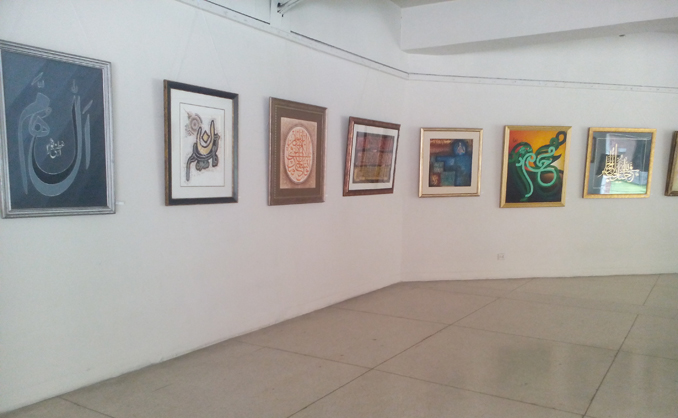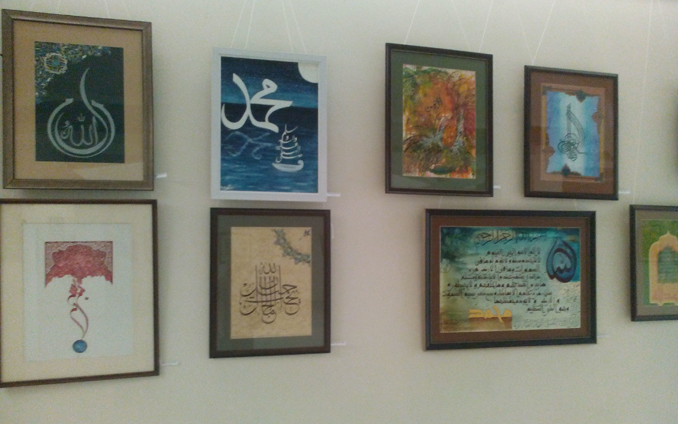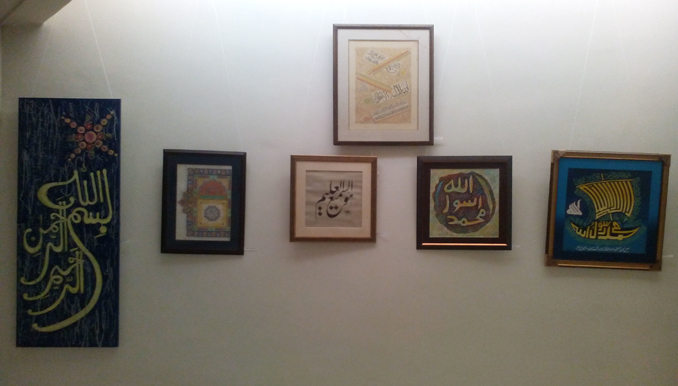Written by: Salma Chaudhry - Posted on: July 18, 2014 |  Comments
Comments
Google Translation: اُردو | 中文
Calligraphy or written Islamic script is undeniably omnipresent in Islamic tradition. The significance of this form of writing goes far beyond ‘only written script’ and has connotations which are both profound and wide-ranging. An important feature of ornamental art and craft in the Muslim world, calligraphy is visible in Islamic architecture, paintings, fabric, jewellery as well as vital manuscripts of all types. Almost all Mughal architecture in the subcontinent has used some form of calligraphy to decorate mosques and other important structures.
The written script has been, from the very beginning, an emblematic substance for Muslims which underscores and instigates the artistic worth that it incorporated as calligraphy grew to be an authentic art form. The written word as a sign with both religious and aesthetic implications is persistent and is as imperative today as it was in the earliest Islamic traditions.
 |
In this sense it is vital as a visible expression of the elusive, the timeless and the divine. Exhibitions are held throughout the year to represent the affluent inspiration of Islamic Arts and Architecture, outlining the chronological progress of Islamic regions and empires and underlining their miscellany of creative appearance from earliest Islamic periods.
Keeping up to the tradition, a calligraphy exhibition in collaboration with the Pakistan Calligraphy Artists Guild has been organized by the Alhamra Arts Council, Lahore to uphold the true spirit of the Holy month of Ramzan. The exhibition was inaugurated on July 8 by Hassan Shahnawaz Zaidi, a former principal of Punjab University’s College of Art and Design and features masterpieces of some 90 artists from all across Pakistan including Islamabad, Attock, Karachi, Gujranwala, D.I Khan, Quetta and many others. Beautiful pieces of Quranic manuscripts, in various styles including Khat-e Naksh, Khat-e Nasta’liq, Khat-e -Deewani, Khat-e Kufi, Khat-e Bahar and Khat-e-Turkistani have been put on display. Each canvas has an inherent compassion with the ambience; there is no turmoil, no warp; everything seems to be at complete peace as you walk through the various corridors of the gallery with these masterpieces on display.
 |
The exhibition showcases works of some of the country’s most renowned artists including Sadequain, Khurshid Raqam, and Abdul Wahid Nadirul Kalam, Sufi Khurshid Alam, Irfan Ahmed Khan, Gohar Qalam, Abdul Wajid Yaqoot Raqam, Shafique Farooqi and Irfan Qureshi, to name a few. An aesthetic amalgamation of customary and modern ideas is quite evident in the paintings. The wonderful colours used by the artists symbolize the rich Islamic heritage and the way it is celebrated. A tribute to the Holy month of Ramzan, the exhibition portrays the feelings of ownership and love that Muslims share with this type of art and which has been used for centuries to embody the rich Islamic culture.
 |
Calligraphy continues to be seen as an essential cultural marker these days, and an effective tool to spread the message of peace, tolerance and relationship with The One. Such exhibitions are also significant to illustrate the imperative role of creative expression as well as the value and strength of the written word. The exhibition which will continue till the 25th of July is receiving a wonderful response with a number of visitors coming everyday and appreciating the efforts of the great artists and organizers.